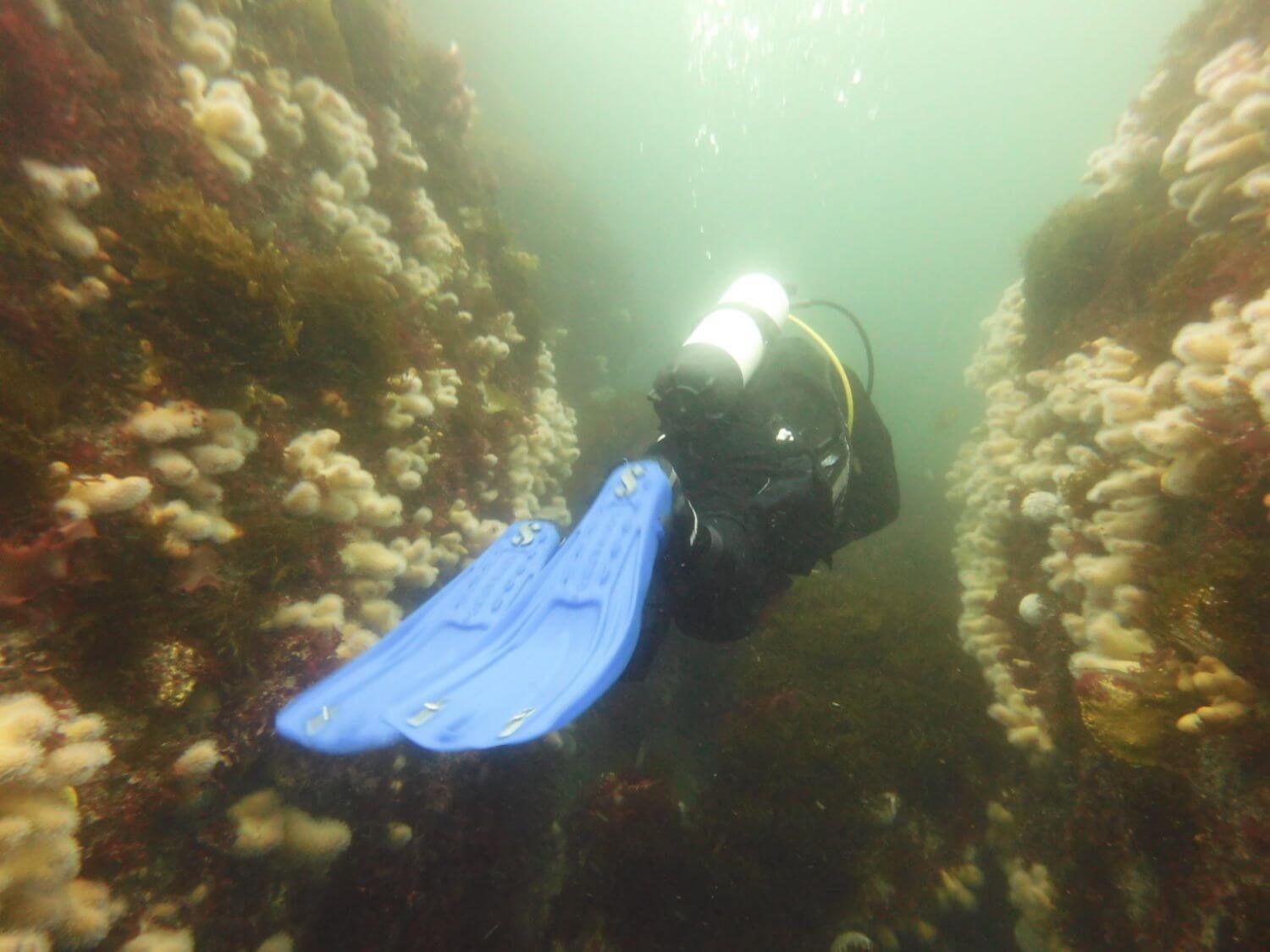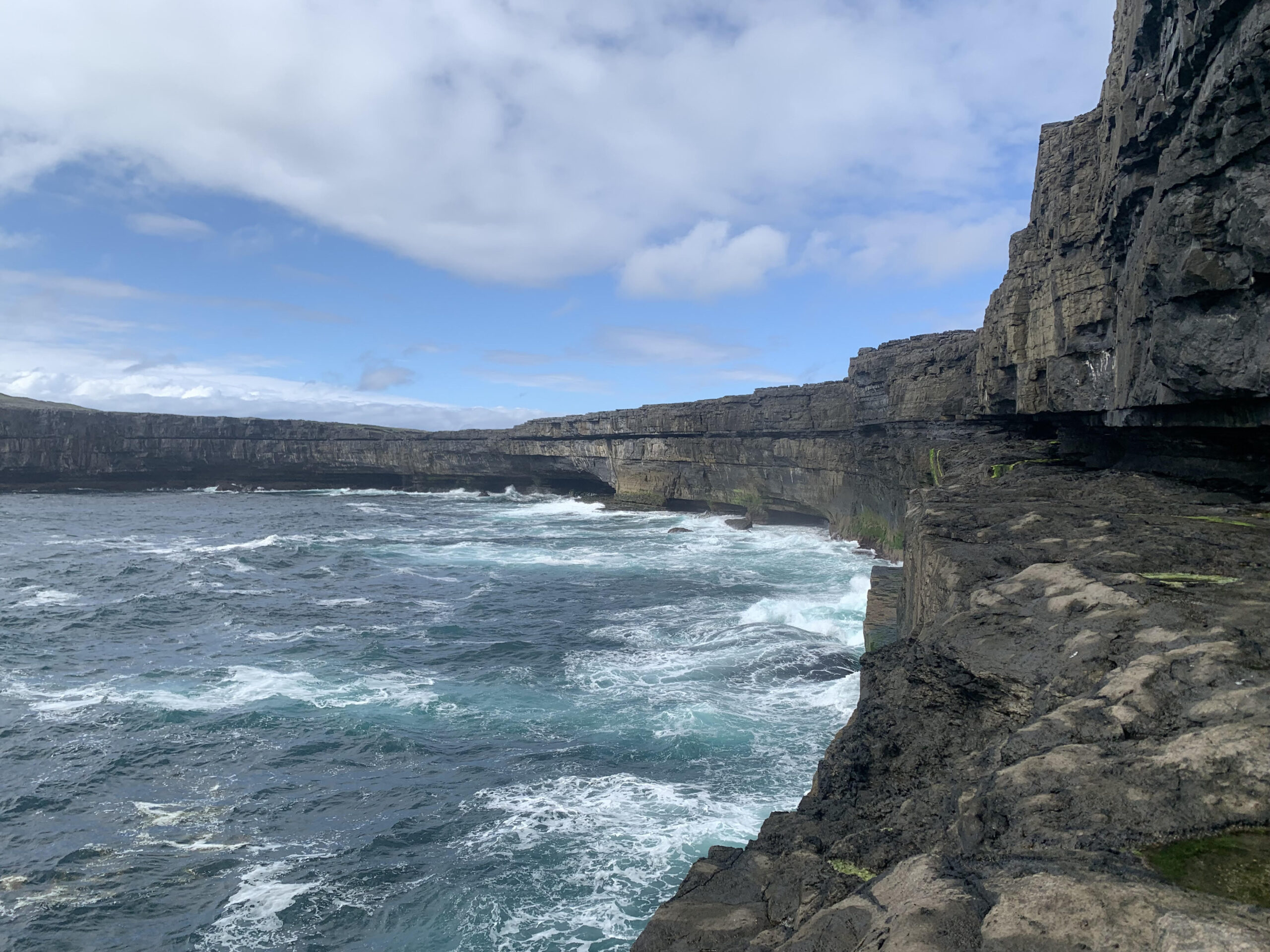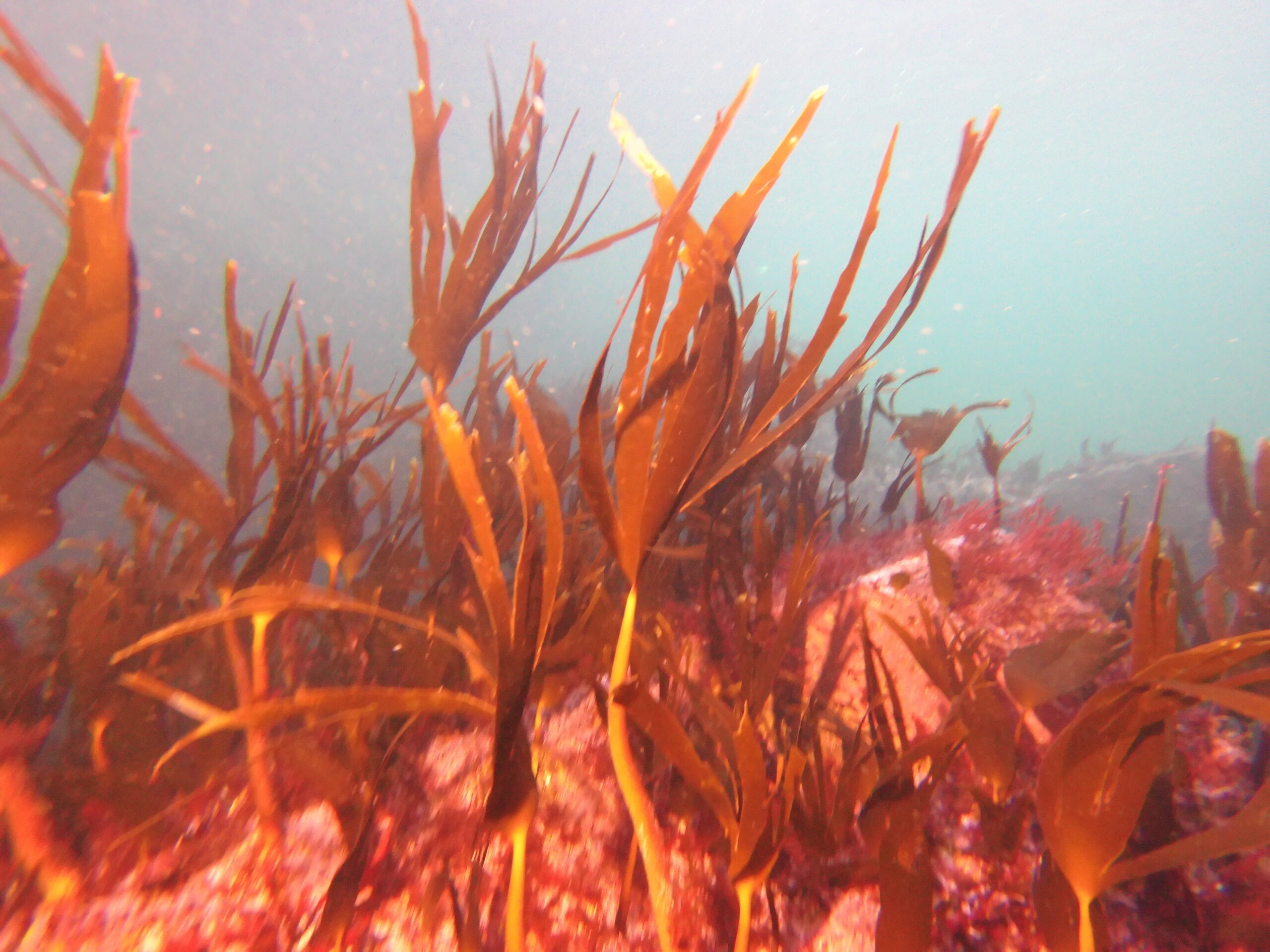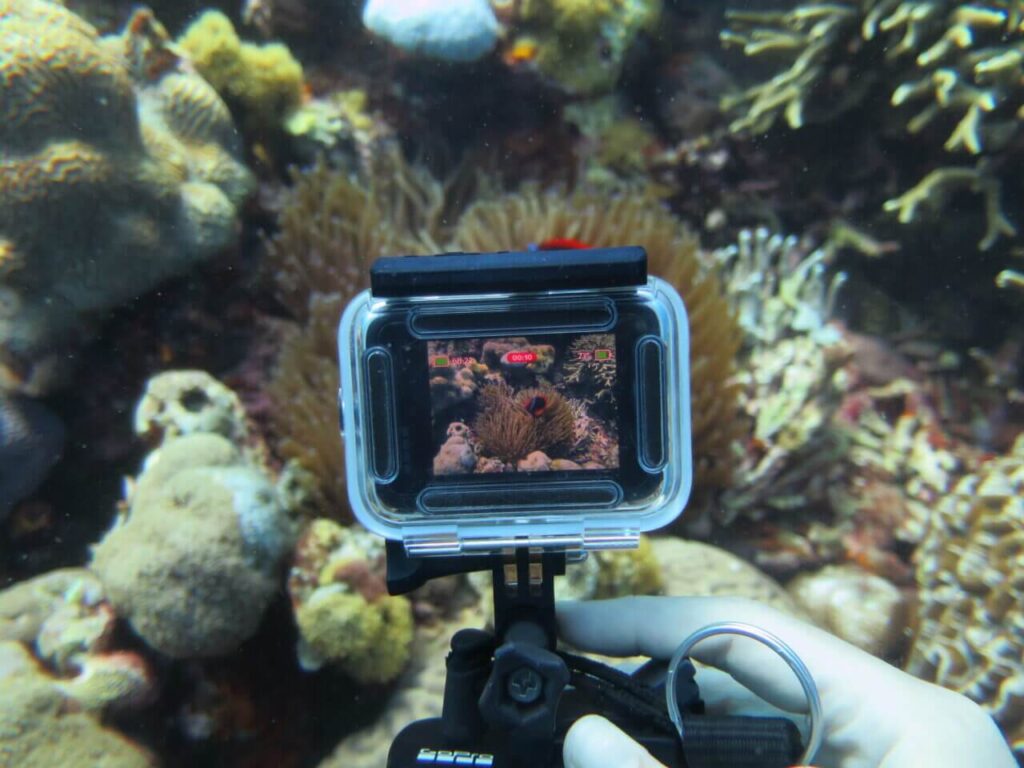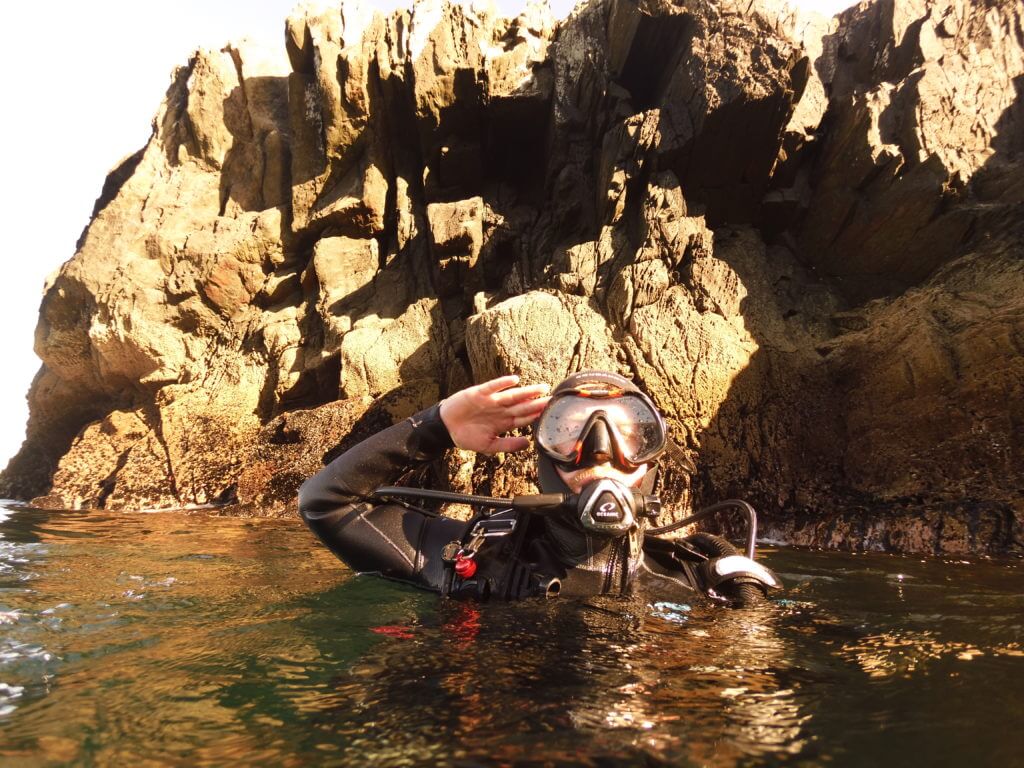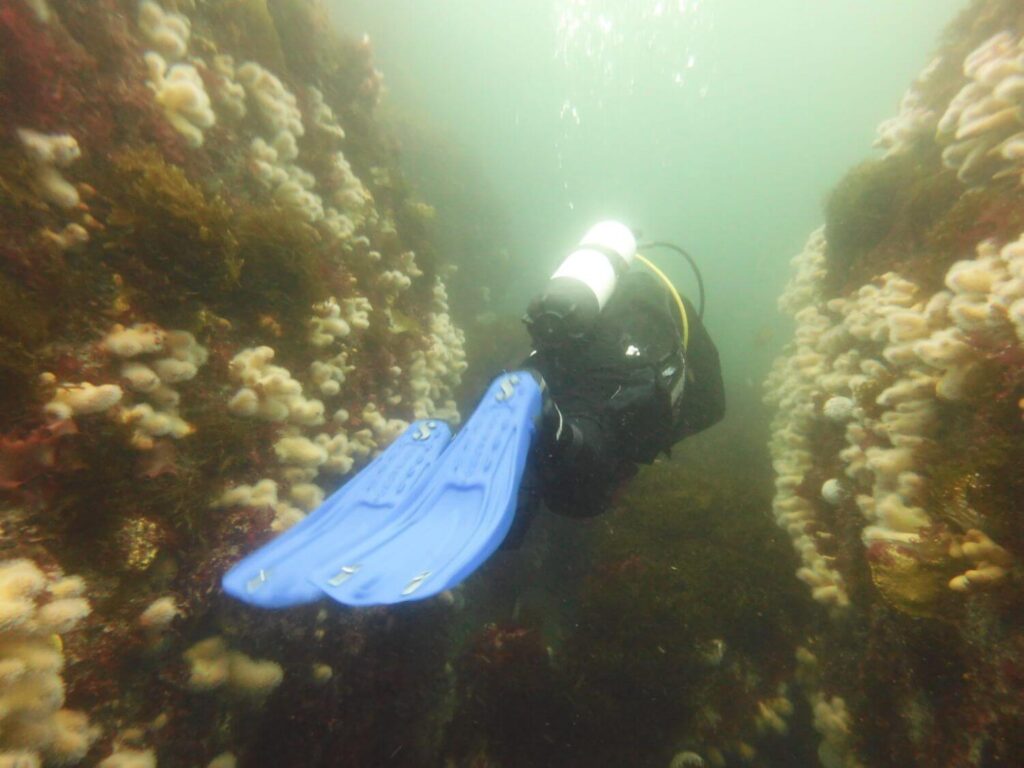
Located off the west coast of Ireland, the Aran Islands are a trio of rugged and windswept lands with ancient ruins that date back thousands of years.
Despite people having lived on these 3 islands for so long, the waters around them have only been explored by scuba divers since 2020!
The diverse underwater landscape is comprised of many underwater towers, canyons and caves coated with soft yellow coral called dead man’s finger’s, sponges and lush forests of kelp.
Hiding amidst this living layer that coats all are lobsters, crabs, crayfish, nudibranch, sea urchins and sea anemones.
Countless jellyfish drift through the waters and three foot-long pollock fish scratch their shiny bellies on rocks and the orange scales of cuckoo wrasse shimmer in the light.
Lucky divers can also see smaller spotted catsharks and seals – whilst the extra lucky may even sight Mola Mola!
Read on to learn how to get to the Aran Islands and where to stay there (spoiler: you definitely need to plan this in advance!).
Dive Centres of the Aran Islands
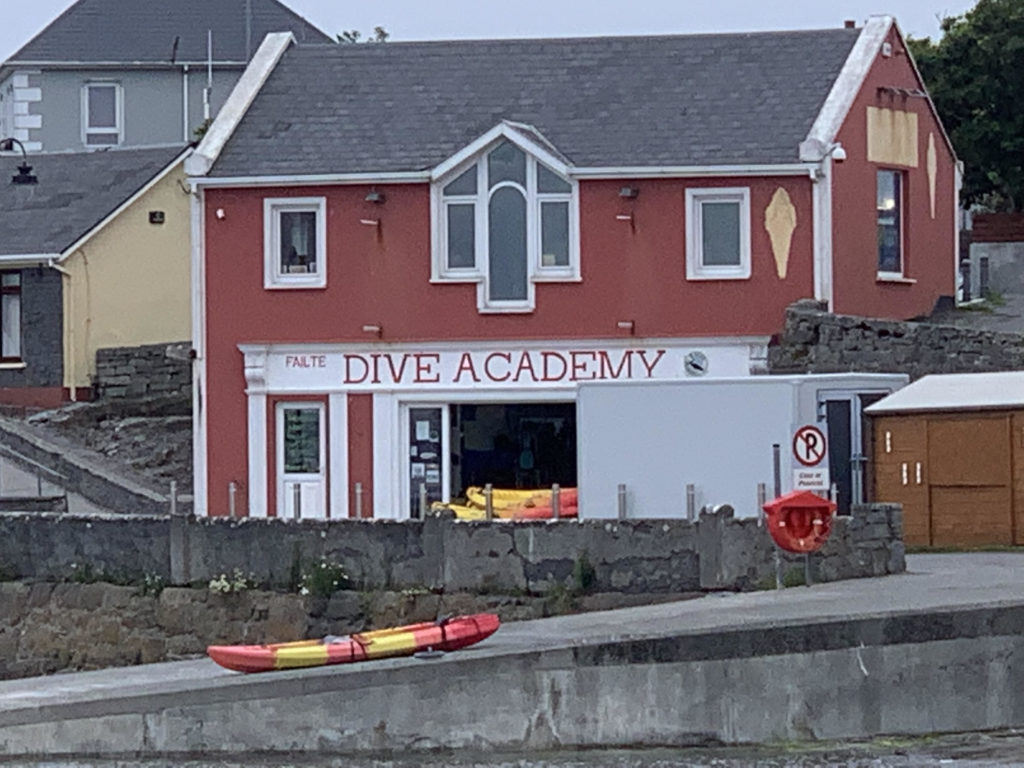
There’s only one dive centre on the Aran Islands: Dive Academy located on Inishmore (aka Inis Mor): the largest of the three Aran islands.
Conveniently, Inishmore is also considered the “main” island as it has the most tourist infrastructure and sights to see.
Run by Polish couple Derek and Ola; Dive Academy is a fantastic dive centre where they’re still discovering new dive sites all the time.
The dive staff are an awesome and extremely passionate bunch; you might just find yourself in the pub with them the evening after your dives!
It’s possible to get scuba certified with Dive Academy as well as do your scuba refresher and also snorkeling tours.
For certified divers who want to appreciate the Aran islands marine ecosystem at its best; Dive Academy operate daily boat dives dives at 9:00 and 13:00 and family dives at 15:30.
I strongly suggest you book your dives in advance as being both highly popular and the only dive centre, Dive Academy often book up especially during holidays.
Check Out Dive Academy Here
Where to Stay
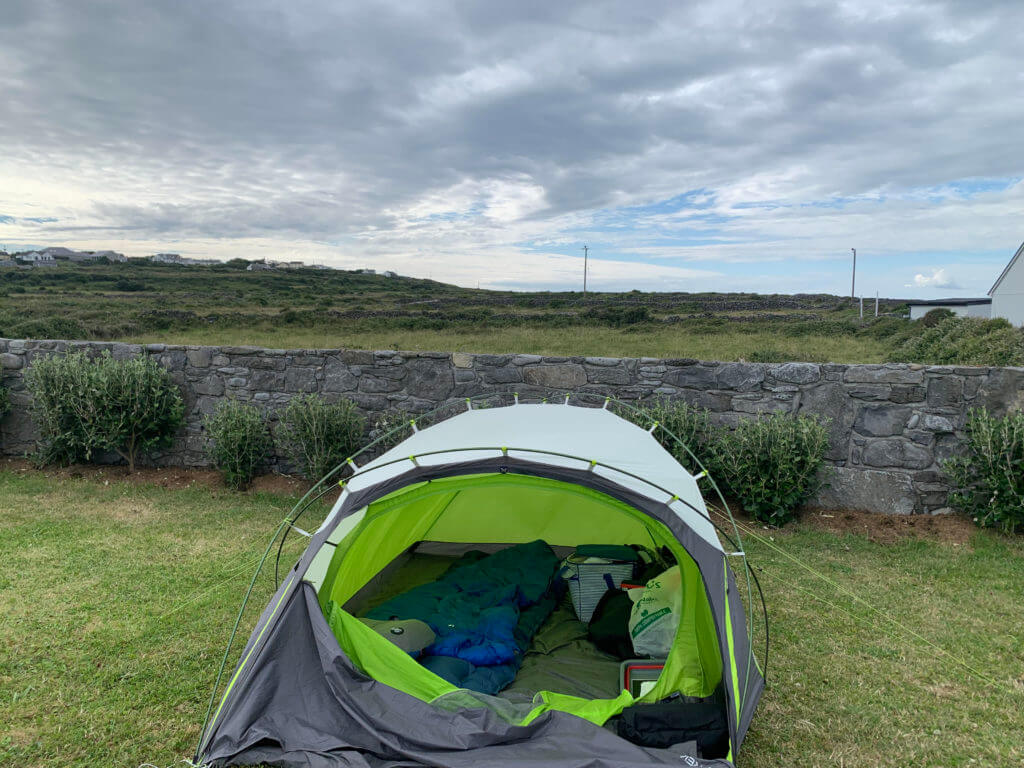
Over summer, masses of travellers flock to the Aran Islands from all over the world.
Most folks don’t go to dive and instead spend their time cycling around and taking in the many spectacular views; exploring the forts and other sights.
Accommodation on Inishmore / Inis Mor gets booked up way in advance; they could do with a few more hotels and hostels!
If you can’t find an available hotel to stay in never fear: there’s a camping site a mere ten minute walk away from Dive Academy – this is also the cheapest accommodation option by far.
Even at the busiest of times you can normally find space to pitch a tent (but still book in advance!).
I found the campsite very pleasant to stay in; they have showers and cooking facilities – although it did get very noisy and crowded during the weekend days.
It’s a pretty lively place over the weekend and a lotta fun to be had at the nearby pub. (People are always up for good craic on the Aran Islands!).
I’d recommend some earbuds for when you try to actually sleep!
The camp site also has some more pricier glamping options which also book up fast.
Check out the Camp Site Availability here.
How to Get There
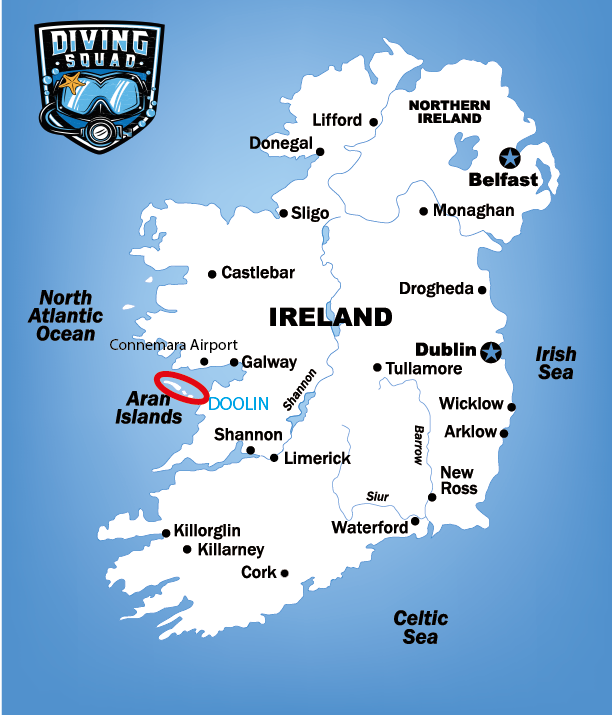
The Aran Islands are located just off Galway Bay and Doolin – which are slightly less than half way up Ireland’s west coast.
The closest international airport is Shannon Airport which is about a 60 minute car journey from Doolin and 105 minutes car ride from Connemara Airport.
To reach the Aran islands, I suggest you catch a ferry with Doolin Ferry Company.
You can also get a ferry there from Rossaveel Port if you’re coming from that way.
Either way, the ferry should take around 30 minutes and is quite scenic and pleasant.
Or you can catch a tiny flight to the Aran Islands from Connemara Airport in Inverin with Aer Aran Islands.
You can check out the route from Shannon Airport to Doolin Ferry with this link.
Diving Season & Conditions

Dive Academy generally operate from May to mid-October and outside of these months are usually closed.
During these months, water temperature usually ranges from 14 – 15 degrees celcius (57 – 59 farenheit). At the very least you’ll want a 5mm wetsuit with most divers I saw at the Aran Islands opting to wear a shorty wetsuit over a 5mm or to go in a 7mm wetsuit or even wear a drysuit if certified to do so.
Water visibility tends to sit around 33ft (10m) but can be greater whilst water conditions range from calm to light drift depending on which dive sites you visit and weather conditions.
Scuba Diving the Aran Islands – My Experience:
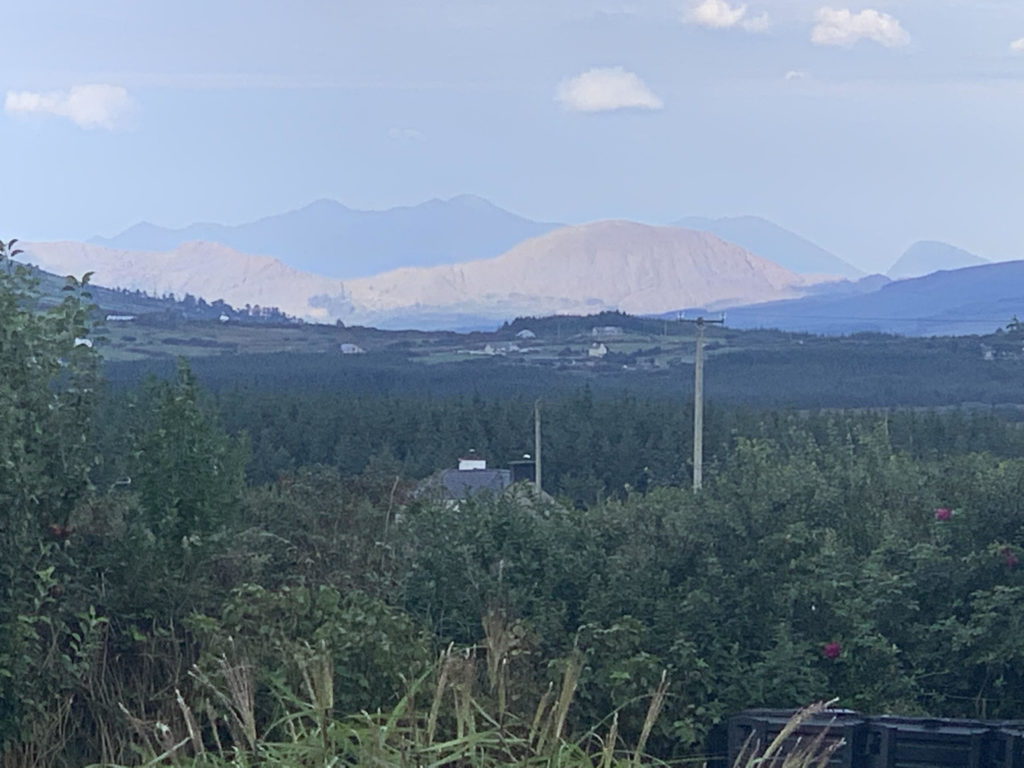
At the end of July 2022, I engaged in what would be the first of several Diving Squad missions around Ireland.
I’d already read a lot about Irish scuba diving and it seemed that the Aran Islands were the most off-the-beaten-track yet up-and-coming scuba diving destination of the country.
Borrowing my extremely trusting mum’s red Suzuki (a considerable upgrade from the 26 year old Senor. Carro with which I’d just explored Central America), I drove 247 km from Ballinskelligs in County Kerry to Doolin in County Clare.
It was a beautiful ride; Ireland’s diverse and mystical landscape is defined by rolling green hills that stretch upwards into epic mountains as well as stunning coastlines that’re strewn with jagged cliffs.
No wander part of “The Force Awakens” was filmed only a short distance from my starting point – on the Skellig Islands, where Rey finds an old, washed-up Luke Skywalker who just want’s to be left alone to drink alien milk in peace).
The hurtling car journey lasted only a couple albums of Infected Mushroom; briefly broken up when I had to drive onto a ferry to get across the River Shannon.
After my year-long-stint with Senor. Carro in Central America, it was quite strange to drive a car with working ac, a functioning speedometer, a decent clutch, windows that wound up properly and fully operational lights.
It felt like the mere blink of an eye before I’d arrived at Doolin and found myself gazing out across the ocean towards the Aran Islands.
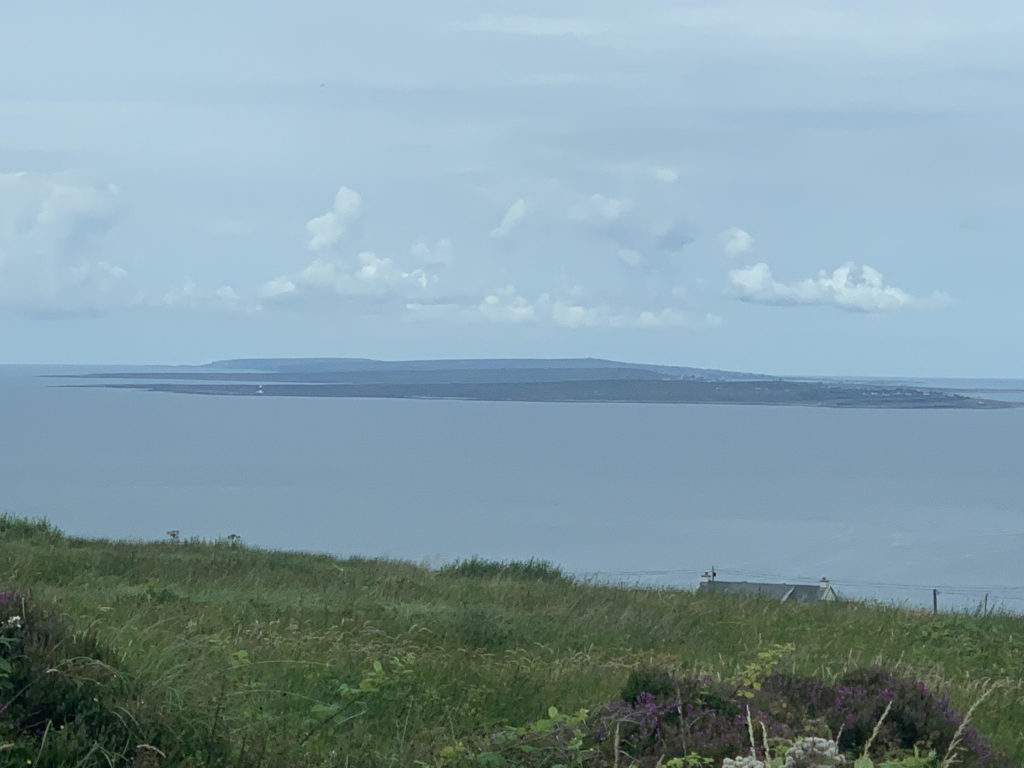
Leaving the Suzuki in a long-stay car park, I hopped onto a ferry; watching as the jagged cliffs of the mainland receded into the distance behind me whilst ahead the sloping Aran Islands grew into view.
The first that we passed was Inisheer; the smallest of the three, it’s ancient criss-crossing dry stone walls were visible even from the boat along with the rusted over Plassay shipwreck on it’s shore.
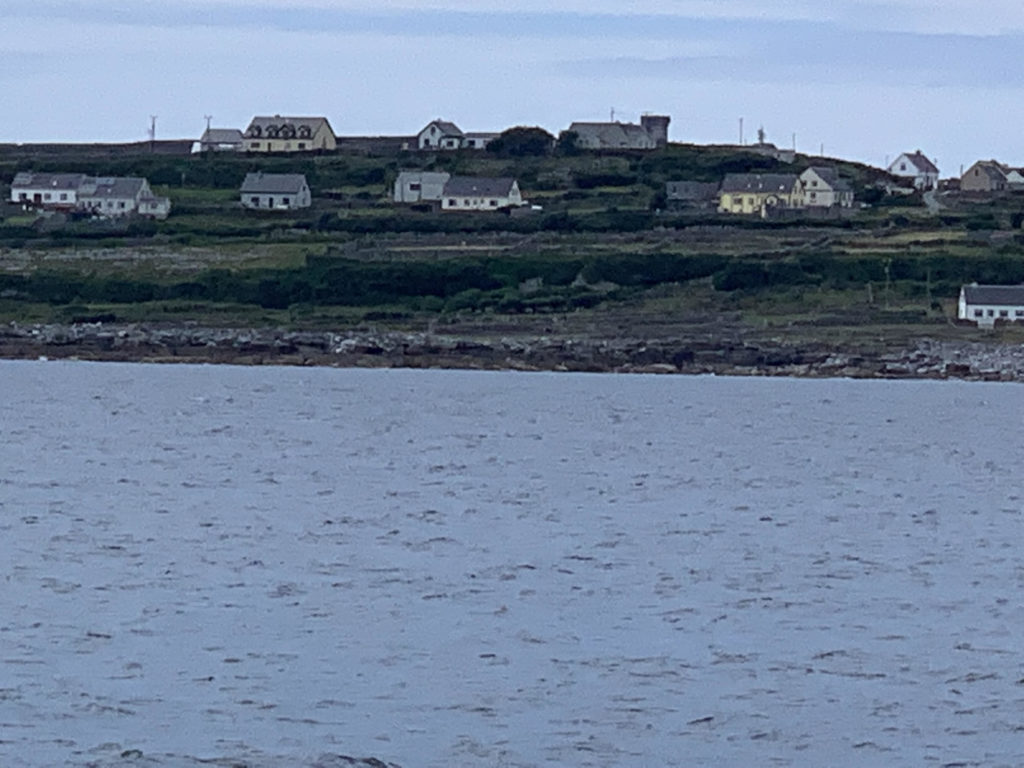
Next we passed the middle island (both in size and position): Inishmann before reaching the largest of the three islands: Inishmoore.
Around the harbour, the blue sky bounced off the clear water’s as I stepped off the boat; dragging behind myself my dive gear, tent, sleeping bag and clothes on a camping trolley that raised more than a few eyebrows (although never more than two per person).
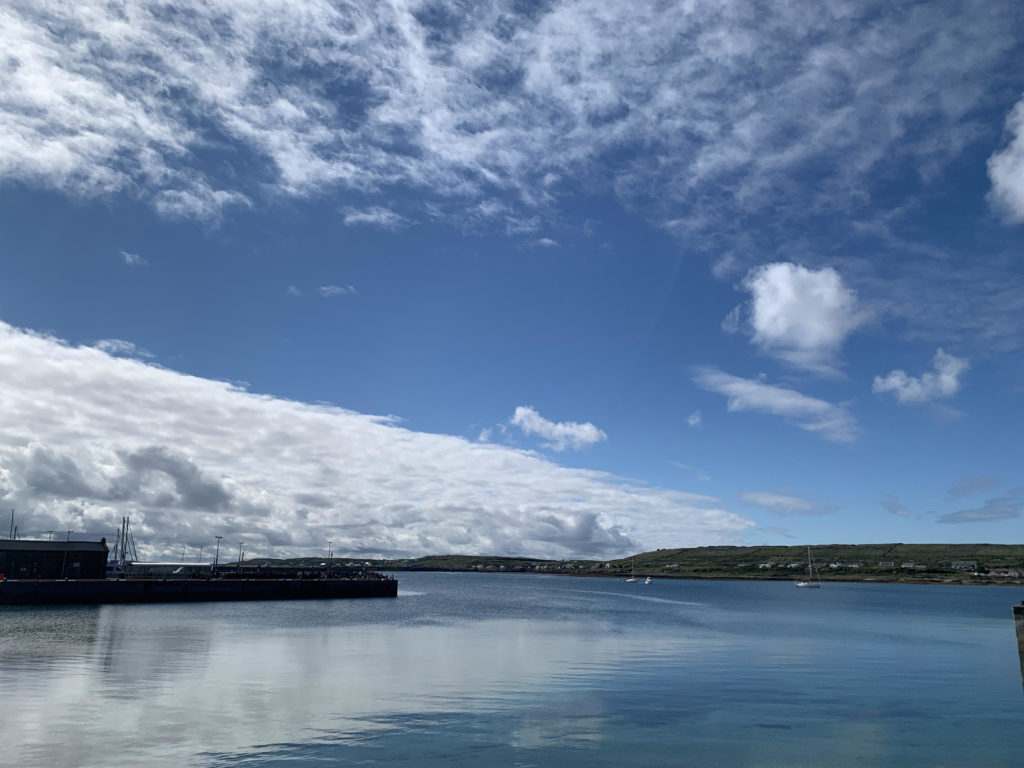
I made my way to Dive Academy; but only momentarily to drop off my dive gear before heading over to the campsite to pitch my tent.
After that it was time for a pub dinner and a pint before I passed the last few hours of daylight gazing out across a still ocean; imagining what might lay beneath it. Tomorrow I would start to find out….
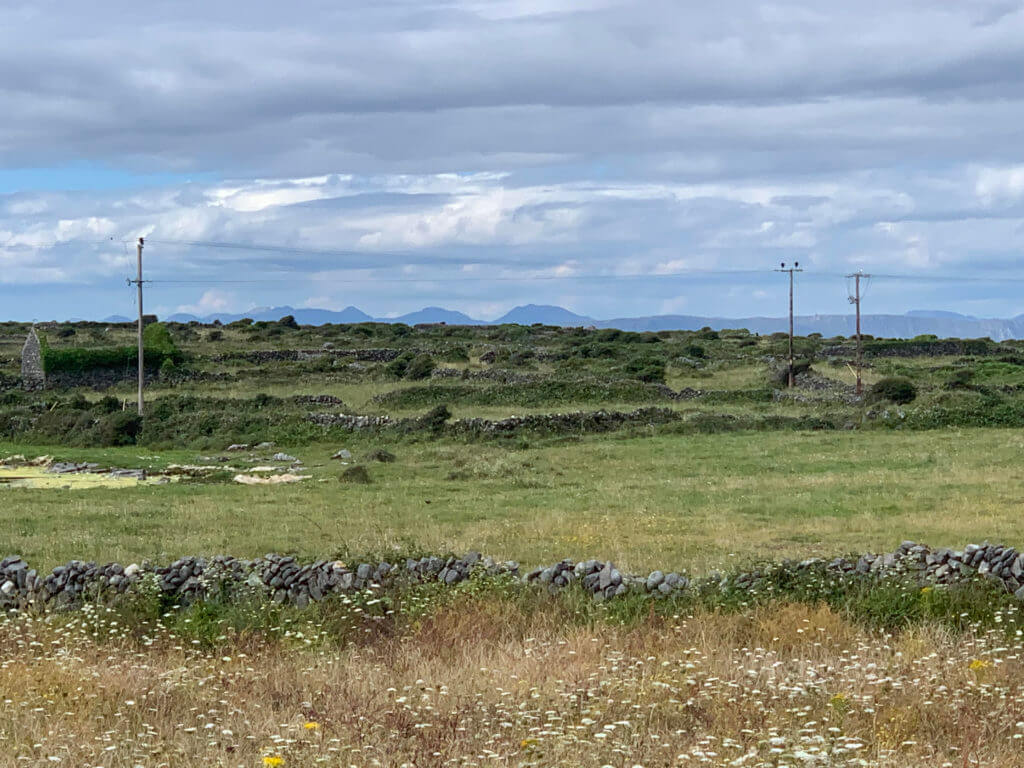
The following morning, I made my way back to Dive Academy and headed out on the boat with Derek as skipper and his son Philip as my dive guide.
We made for Straw Island; a tiny sandy islet close to InishMore.
Upon reaching it, Derek switched off the boat’s engine and almost immediately we saw scores of seals appearing from the water, their heads and shoulders poking above it as if they were standing on underwater steps.
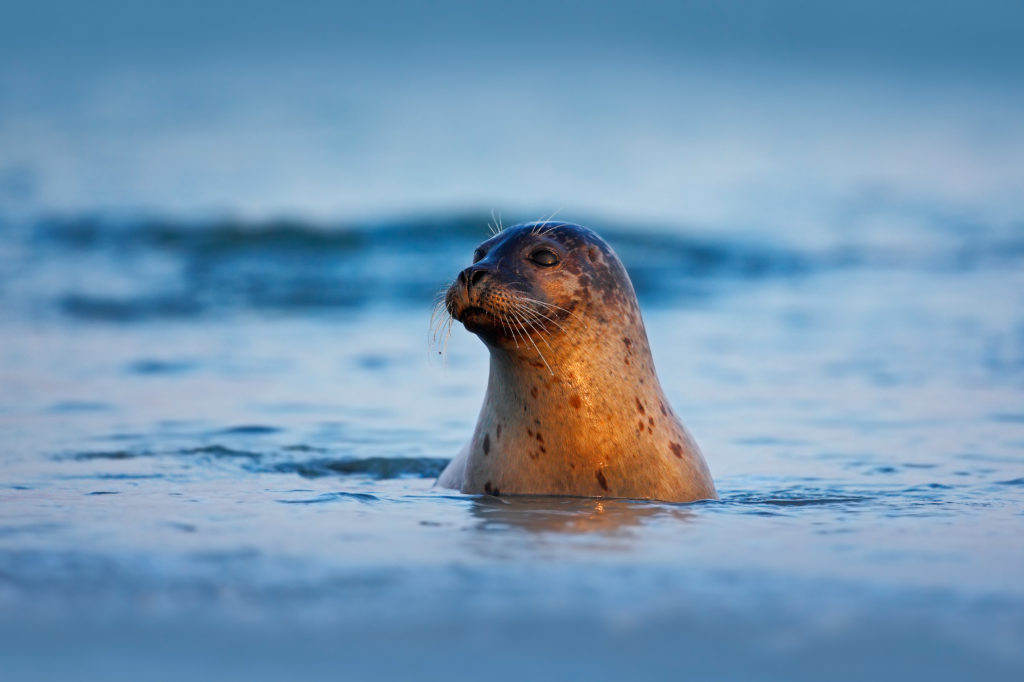
They stared at us like we were alien visitors from another world (which I suppose to them we were!).
I opted not to take any photos; preferring to enjoy the moment and certain I’d see many more seals over the following week; in reality this would be the only time I witnessed any.
Philip told me that because divers had only been in the area a couple of years, seals are still extra cautious of us; rarely presenting themselves underwater but more often seen by snorkelers or from the boat.
There’s two kinds of; seals at the Aran Islands: common seals and Atlantic Grey Seals which are one of the rarest seals in the world!
Grey Seals are powerful swimmers; able to dive down as deep as 70 meters whilst hunting and holding their breath for up to 30 minutes.
Amazingly, half of the world’s population of the incredibly rare grey seals live around Ireland’s coasts.
After gazing at the seals, myself and Phillip back-rolled off the boat and I got my first taste of diving Irish water’s.
Even with my 5mm wetsuit and neoprene hood, the water’s were notably colder than anywhere I’d dived before but not overwhelmingly so.
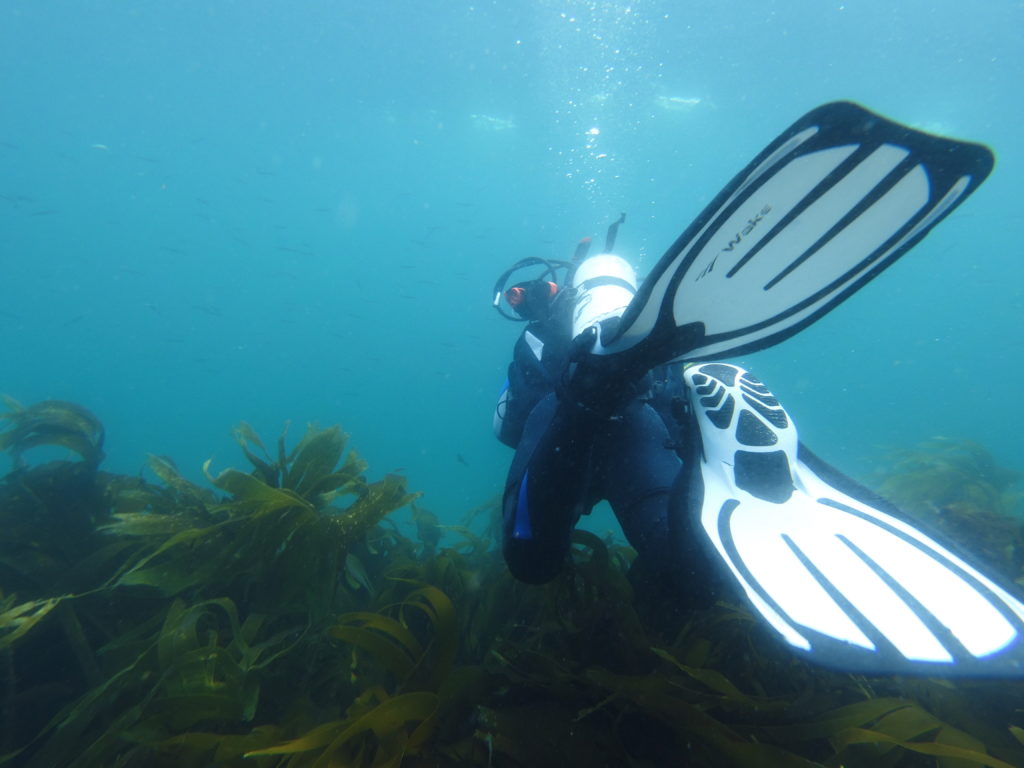
The first organism I ever saw whilst diving in Ireland was kelp – and lot’s of it. Thick carpets of the plant-like organism were sprawled out across the seabed in places for as far as the eye could see.
I say plant-like because although kelp looks like a plant, it actually belongs to an entirely different kingdom of life: the protists which include amoeba, diatoms and sea lettuce.
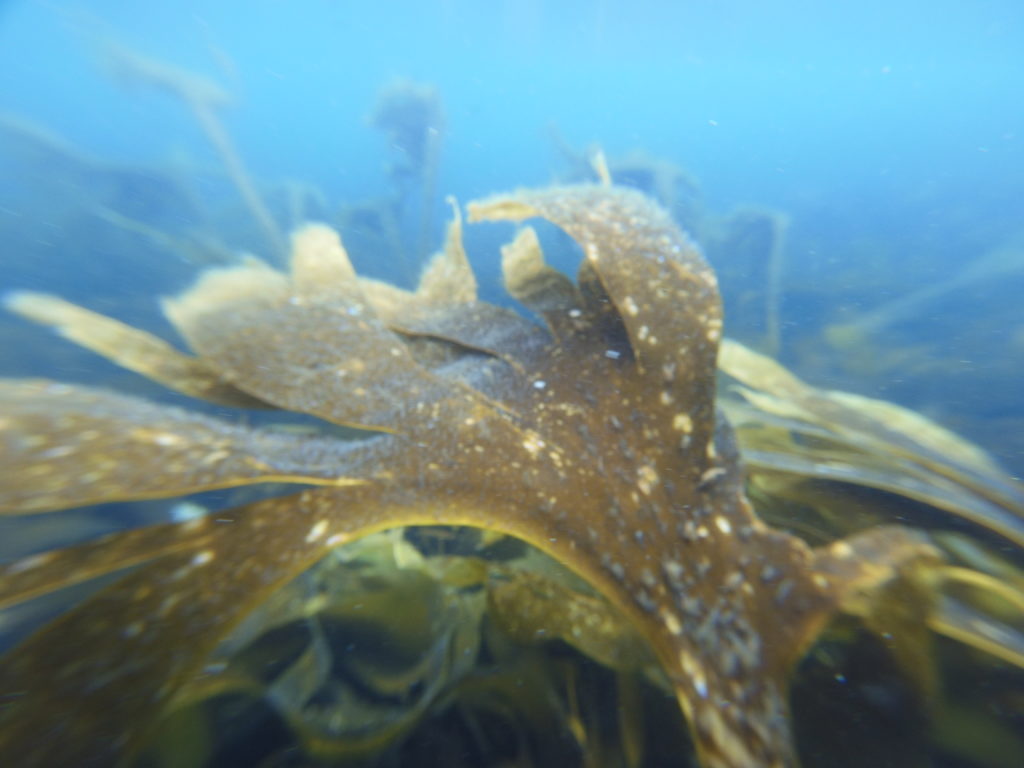
Whereas some protists – such as amoeba are more animal-like due to the fact they obtain food by consuming other organisms, others like kelp are more plant-like because they photosynthesise and have roots.
Most protists are microscopic – however kelp is the largest and most complex protist there is, with recorded heights of 175 feet (53 m )!
It’s amazing to think that kelp – a plant-like organism is more closely related to amoeba than actual plants. To me, this makes it all the more alien and surreal.
The next living thing that I saw was a jellyfish; which was quickly followed by another jellyfish and another.
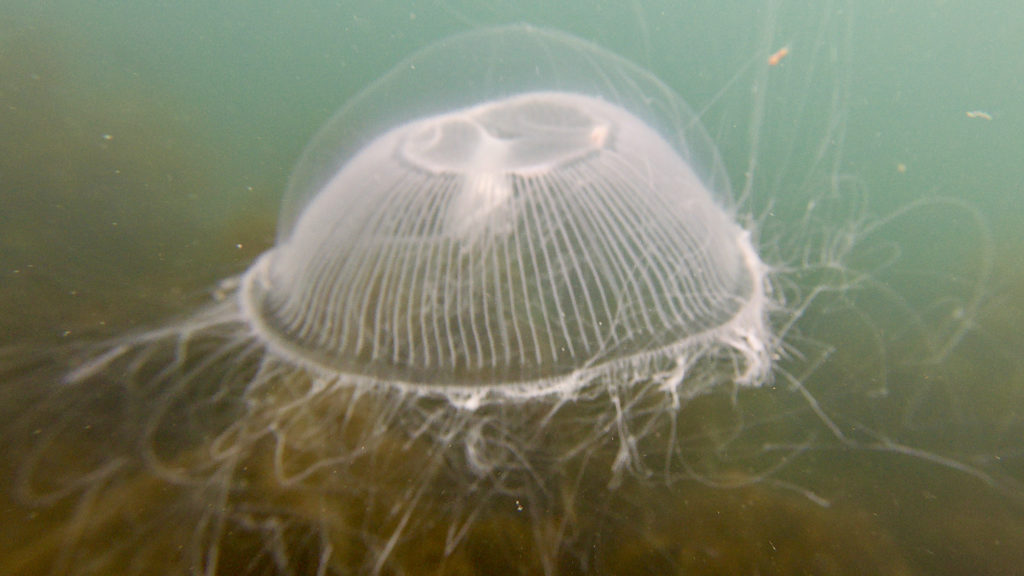
The water’s around the Aran Islands and much of Ireland in general are literally teaming with jellyfish.
Most common are the moon jellyfish (aka common jellyfish), compass jellyfish and comb jellyfish and to a lesser extent blue jellyfish and lion’s mane jellies.
At some dive sites around the Aran Islands there were literally hundreds of moon jellyfish floating through the water and I also saw quite a few compass jellyfish and sea gooseberries: a type of comb jellyfish with noticeable streaks of bioluminescence rippling along it’s small body.
The next day we dived alongside the cliffs of Inishmann; the middle of the three Aran Islands.
The underwater landscape was varied and spectacular with epic walls, steep ridges and even a large and spacious cave teaming with hundreds of jellyfish and thousands of tiny white starfish.
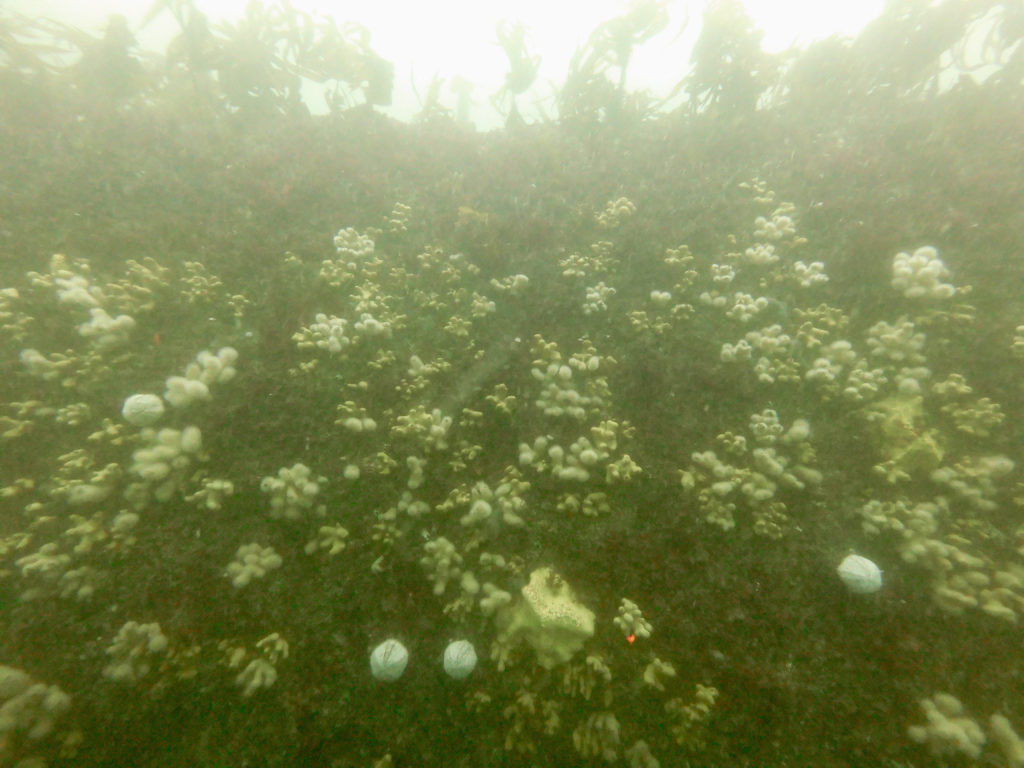
Much of the rocky surfaces were strewn with kelp and red algae. But also covering a great deal of surface were colonies of Dead Man’s Fingers: a soft coral that grows in abundance in Irish waters.
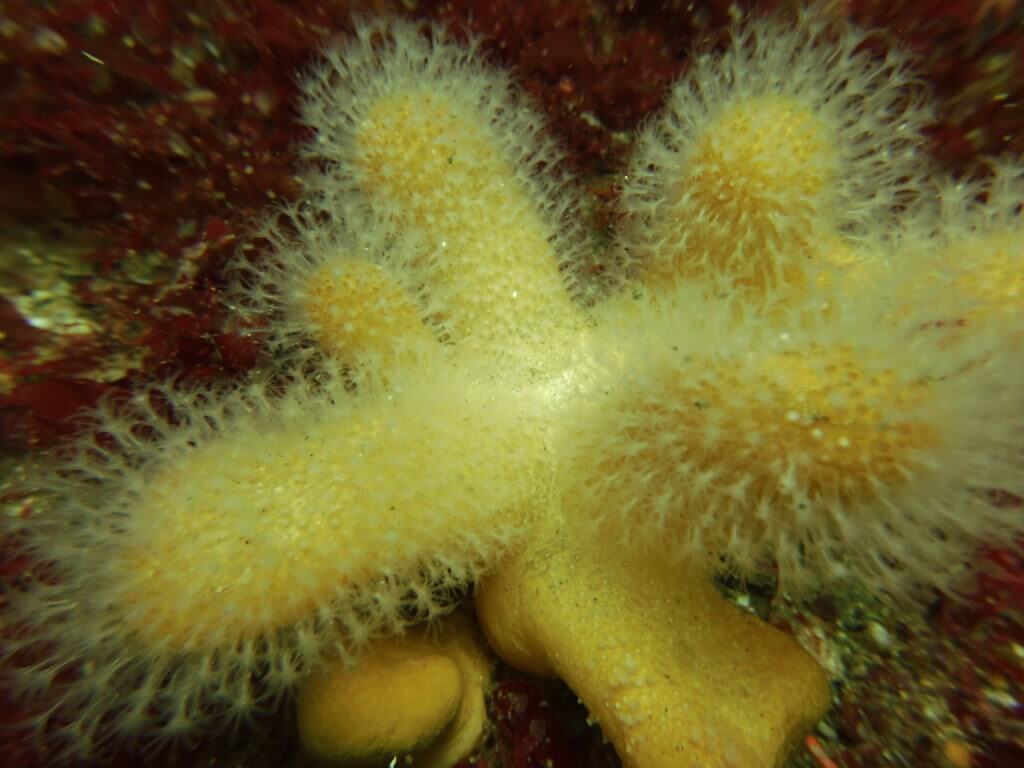
Pale yellow in colour, dead man’s fingers gets its name from the finger like structure of its skeleton; from which protrude many polyps filtering the water for food.
Found down to fifty meters, it ranges in colour from light yellow to orange and prefers to grow in waters with strong currents.
Dead Man’s Fingers is the keystone species of any shallow Irish reef; indeed it’s the only abundant species of coral accessible to recreational scuba diver’s in Ireland.
Upon glancing closer at the living chunks and bumps of yellow stretching out before me, I also realised that not all of it was Dead Man’s Fingers; inter-strewn among it were thick patches of yellow sponge; slightly darker yellow in colour.
Growing and crawling amongst the reef were dozens of white sea potatoes as well as many sea anemones of orange and green, more starfish, several white nudibranch, patches of sea lettuce and the occasional spider crab.
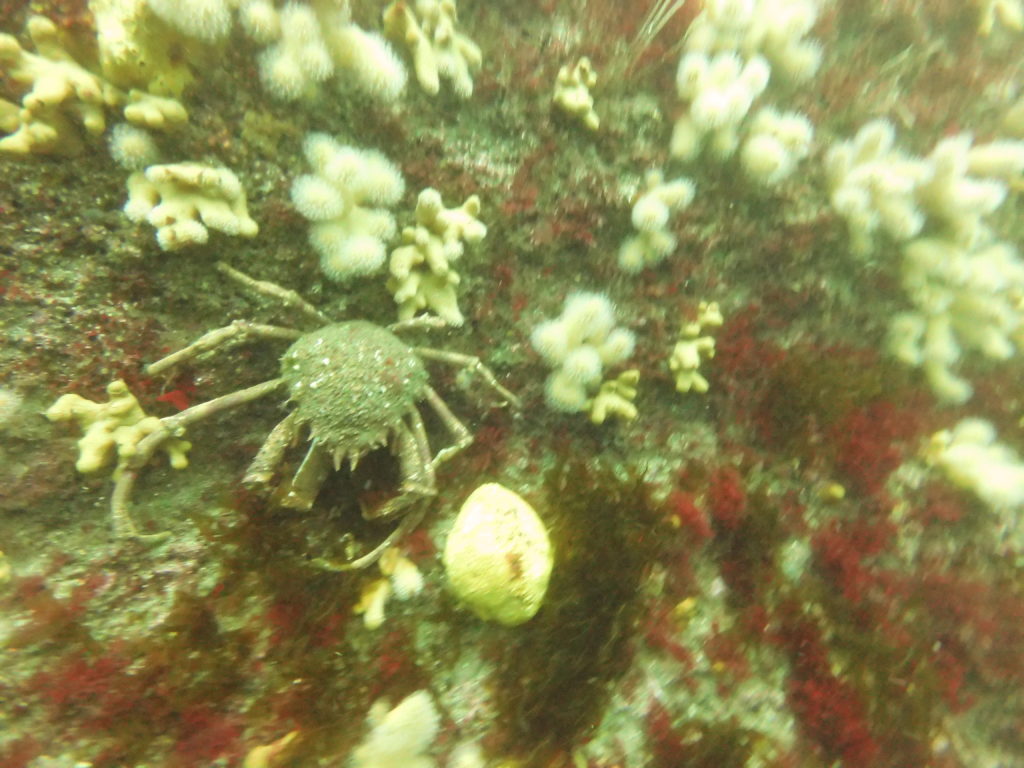
I used my trusty Sealife Micro 3.0 to capture all of the underwater photos you’ve so far seen on this page (barring the few shutterstock images which are marked as so).
I practiced using the new macro lens I’d bought for it to get some close up shots – such as the one to the right showing the polyps of a small colony of dead man’s fingers!
And so it was that I discovered the main culprits for any shallow Irish reef: plenty of dead man’s fingers amidst yellow sponges with kelp, red algae and various benthic organisms like starfish, crayfish, sea anemones, crabs and sea potatoes.
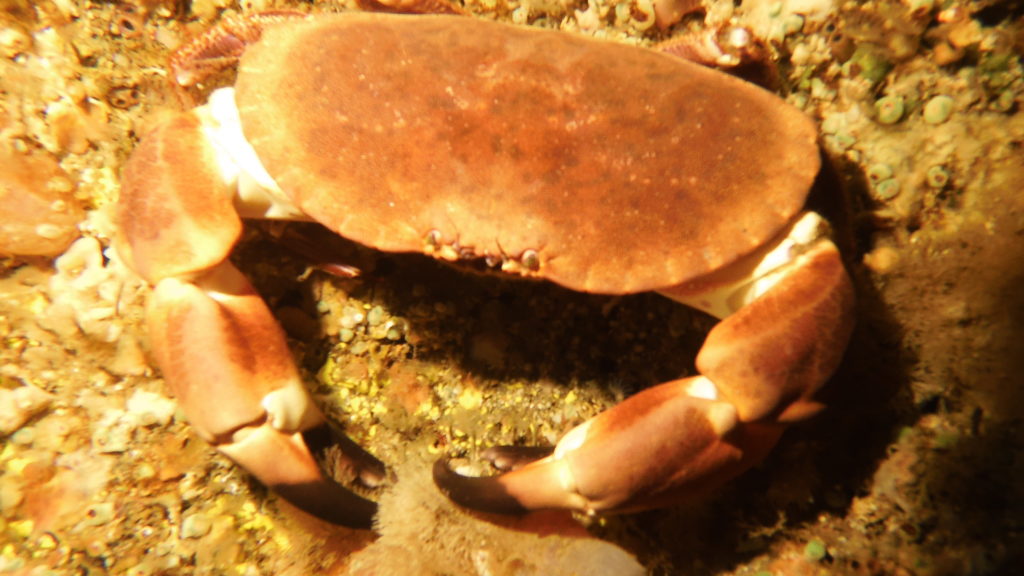
Over the following days, I continued to explore the Aran islands with Dive Academy.
A highlight was seeing the Aran Island’s endemic shark species: the small spotted catshark!
Also known as sandy dogfish, it’s a type of ground shark that grows up to one meter and is commonly encountered throughout the northeast Atlantic and the Mediterranean.
Often found resting on the seabed or swimming with purpose in search of food, small spotted catsharks are highly opportunistic feeders with a wide variety of prey.
I only saw one of these cute little sharks at the Aran Islands, but they’re actually extremely common there and I was told it’s not uncommon to see one on most dives.
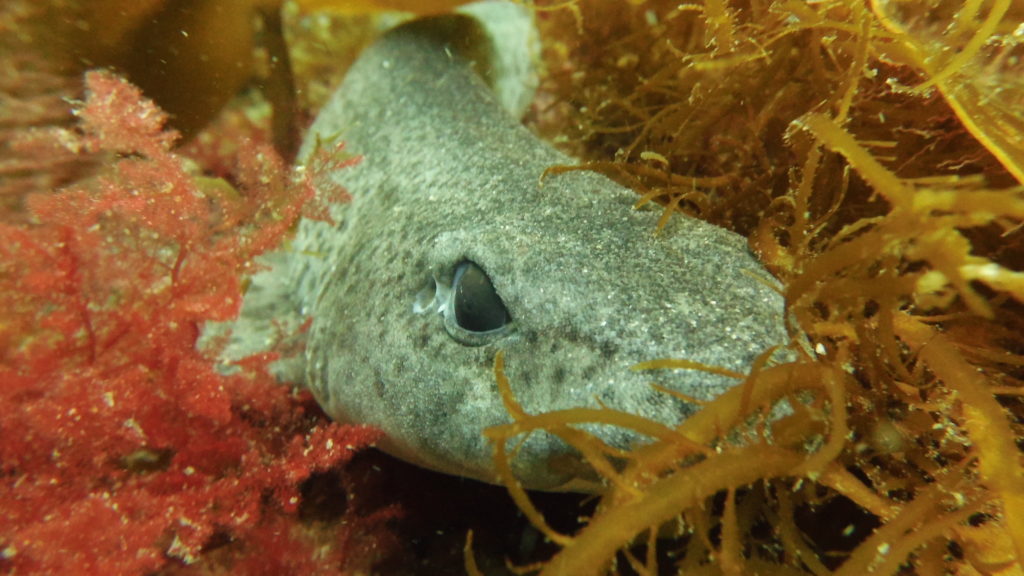
I continued to explore the many reefs of dead man’s finger’s around the ever-varied underwater landscape of narrow canyons, towering pinnacles and rocky overhangs with shallow caves.
There wasn’t an over-abundance of fish, but I did see quite a lot of Pollock: silvery fish with streamlined bodies growing up to a meter long.
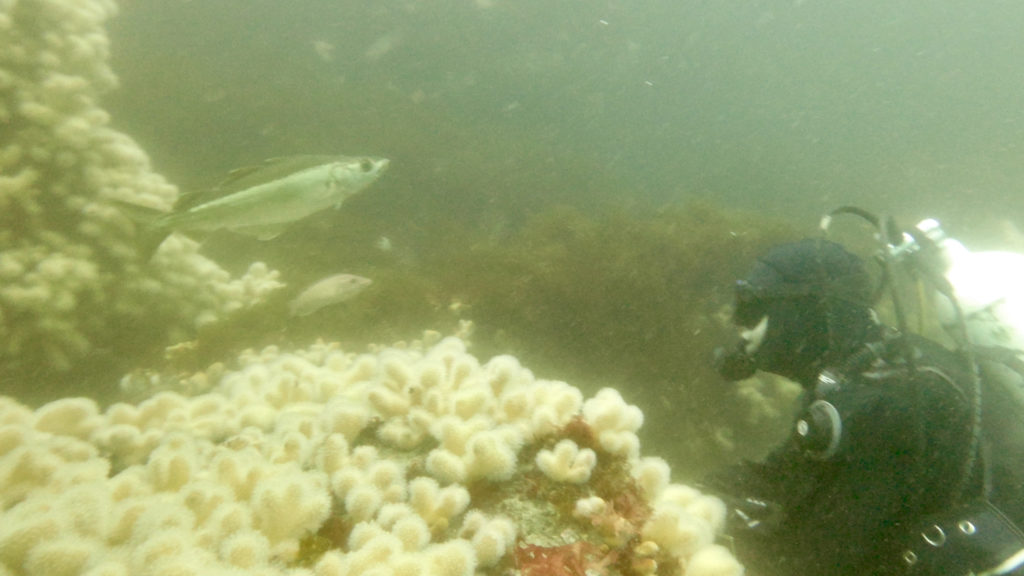
The next biggest fish were cuckoo wrasse which looked like they could be from the Caribbean with the stunning orange scale of their lower halves.
Besides these two larger fish there were also some big schools of whitebait, although not that frequently.
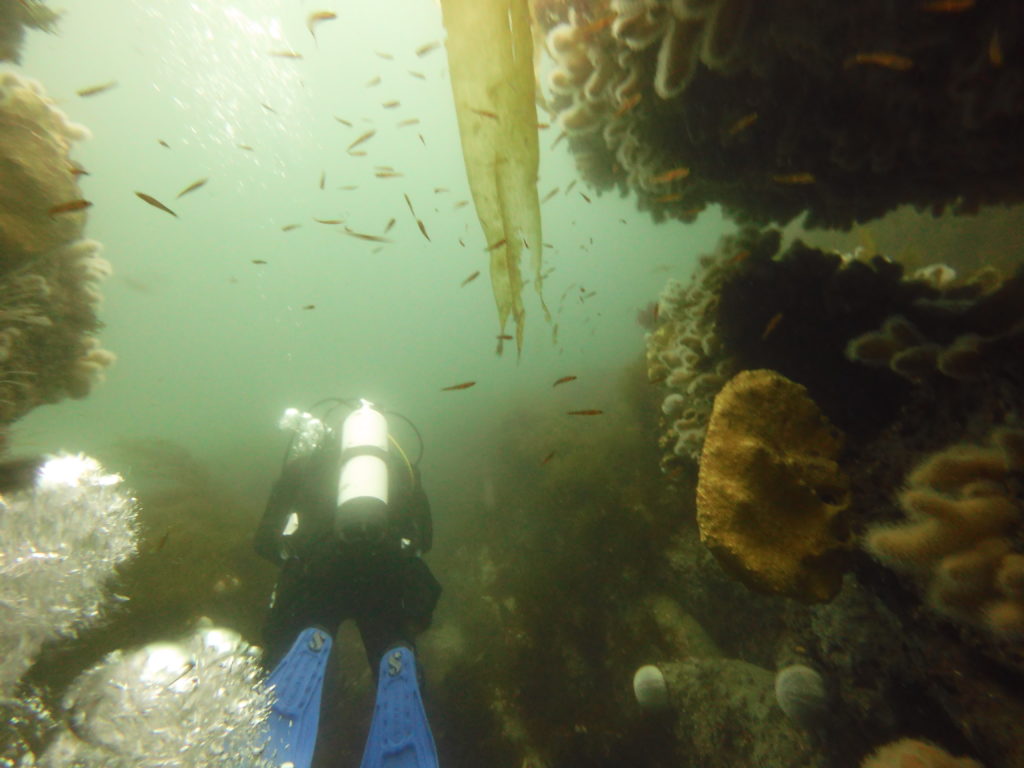
I also met an extremely friendly lobster which was fascinated by my camera lens and kept crawling up to press it’s antenna against it allowing me to get the epic macro shot to the left!
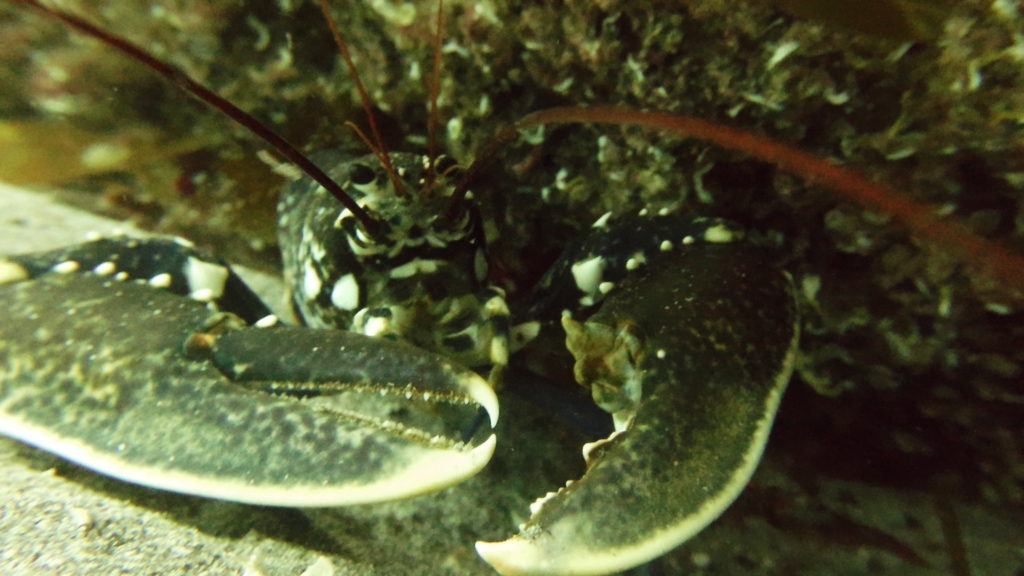
On more than one occasion I found myself in the pub with the Dive Academy crew who were extremely welcoming and friendly.
Indeed it was with them that I experienced my first bout of Irish circle dancing; to live folk music no less and another night I found my body contorted and squashed into an airing cupboard at 2AM during a game of hide and seek in someone’s house!
These guys really knew their stuff and they were passionate about the Aran Islands – many had dived all over the world and still considered the Aran Islands to be a world class dive destination.
I totally agree with them; with it’s abundant reefs, teaming marine life of seals, fish, crustaceans, kelp and tiny sharks; the Aran Islands are as good as any tropical dive destination.
At the time I visited, Dive Academy was frequenting about a dozen dive sites on the regular but I learned that they were still exploring the area and continuously discovering new dive sites.
One time they’d even found a shipwreck but no one had ever been able to locate it since!
There is clearly a huge amount of potential in the Aran Islands – having only been discovered by divers since 2020, they’re a final frontier of scuba exploration.
I also grabbed a bike one day and explored several of the many beautiful sights of Inishmore which you can read about in the next section!
On the last day; after my morning dive, naively thinking I’d seen most of what the Aran Islands had to offer, I opted not to dive that afternoon; instead choosing a hearty breakfast as I’d declined dinner the previous several evenings in favour of the pub.
It was as I sat stuffing my face with Irish breakfast that those who did go diving witnessed an enormous Mola Mola with an estimated width of 3 meters near Inishmann!
Someone tried to console me by explaining that although a rare sight indeed, Mola Mola do get seen around Irish water’s somewhat frequently…at least every few years or so anyway!
It was still extremely cool to know that one of these mighty beings had been in the very water’s I’d dived just that morning…
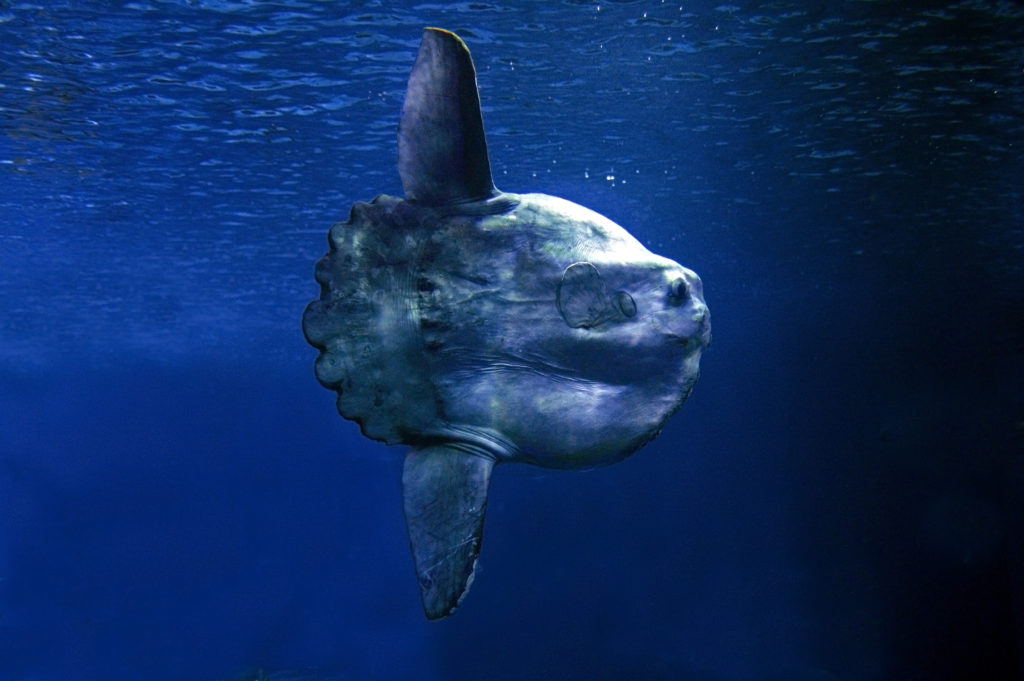
(I vowed never to have Irish breakfast again!). To me, it was a powerful reminder that there is always more to be discovered in the infinite ocean…
Other Activities
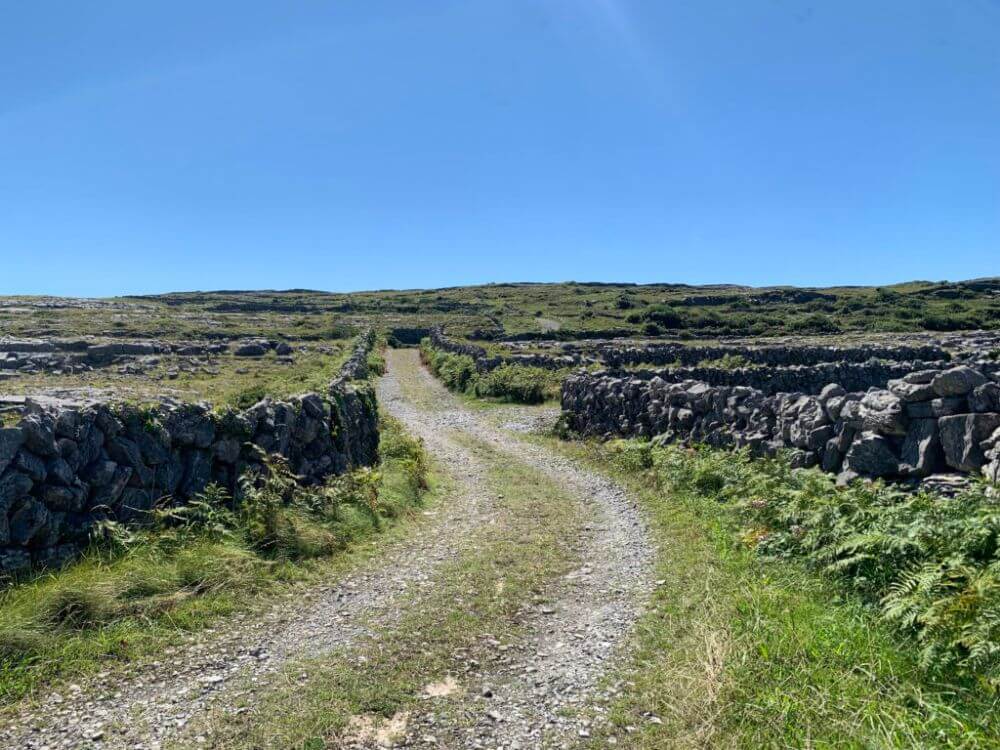
There’s so many awesome things to do in Ireland and the Aran Islands are no exception.
So if you can, it’s definitely worth carving out one or two extra days to explore them.
A great way of cramming a lot of sights into just one day of exploring is to rent a bicycle on Inishmore and ride around for the day.
It’s impossible to get lost but at the bicycle rental they will give you a map with cycle routes all the same.
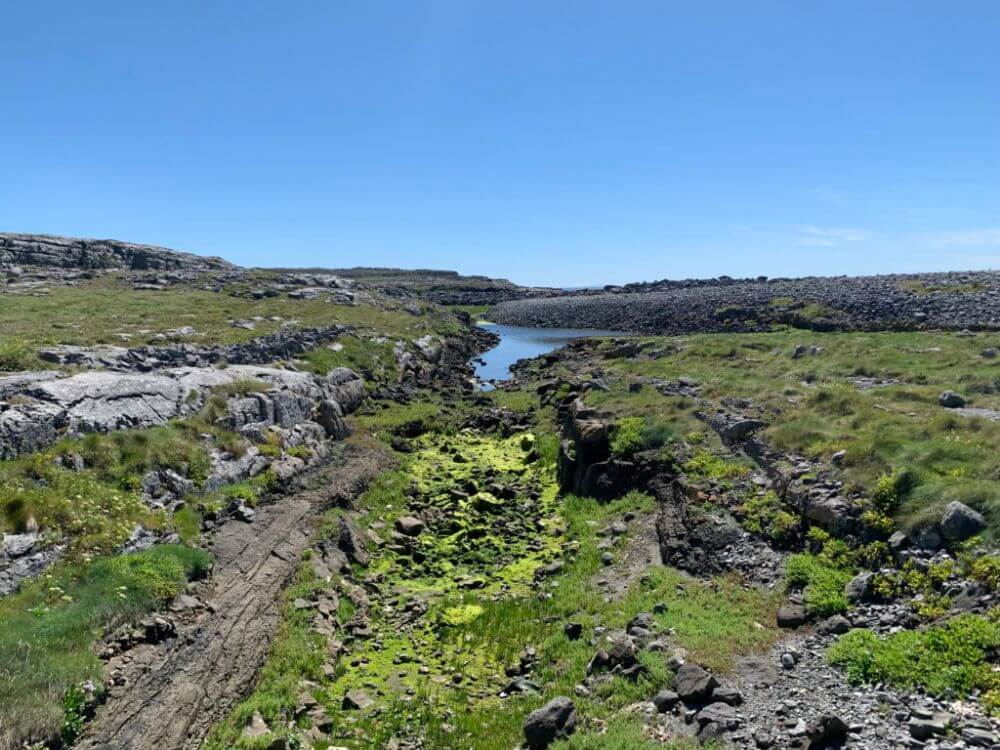
(You can also explore by foot or on a pony cart).
Some of the best things to see on Inishmore are:
- The Black Fort: One of two cliff forts on the island, it dates back thousands of years!
- The Seal Colony: If you don’t see any seals whilst diving or snorkeling, you have a high chance of spotting a few chilling on the beach here.
- Don Eoghanacht: Another bronze age fort; this one is more off the beaten track. I spent a whole hour alone there enjoying the peace and incredible views.
- The Wormhole: Pictured below, amazingly this structure is naturally formed. It makes for spectacular viewing and rarely can even be dived.
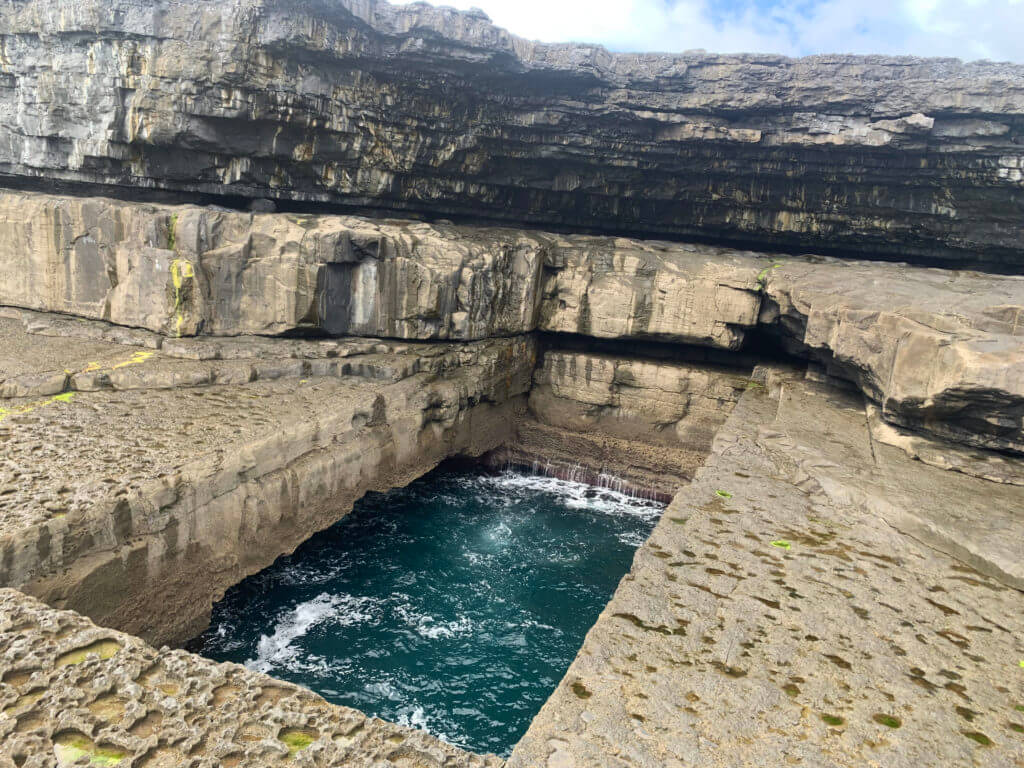
These are just a few of the many sights around Inishmore you can easily discover. I’ll leave some of the discovering to you though as that’s where half the fun is!
If you have another couple of free days you can also visit the other two islands; Inishmaan and Inishere where there’s yet more forts, ruins and even a beached shipwreck.
Just know that on the other two islands your accommodation and dining options become even more limited.
If you could only visit one other island, I’d recommend Inisheer as that’s where the shipwreck is and also another campsite (there’s no camping on Inishman!).
Check out this guide for a more detailed look at how to explore the Aran Islands.
Aran Islands Diving Squad DEBRIEFING:
And there it be! Everything you need to know about scuba diving the Aran Islands of Ireland: the logistics, the options, what you can see – and what you might not!
I really hope you’ve enjoyed reading this article and that you’ll feel inspired enough to visit this incredible scuba diving destination yourself.
Honestly, when I first visited the Aran Islands I was not expecting to be nearly as blown away as I was. But as it was, I left gobsmacked by the incredible marine ecosystem there, the stunning islands themselves and the kickass dive centre and team of Dive Academy – those guys are absolutely crushing it!
